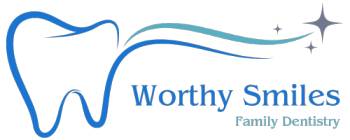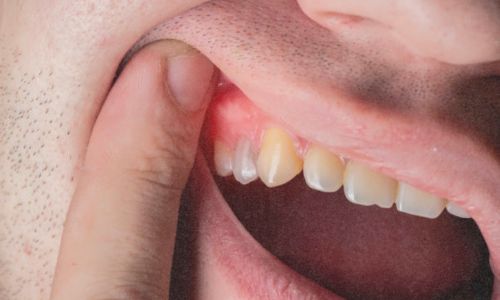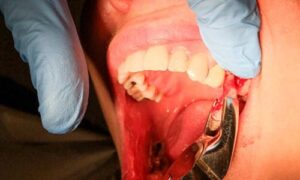Introduction of Gum Diseases and Oral Hygiene
Oral health encompasses the care of both your teeth and gums, necessitating regular attention to prevent cavities, infections, and other related issues. Proper gum diseases and oral hygiene care safeguard your teeth and gums and can positively affect other aspects of your body, including your cardiovascular system.
Dental and oral health are vital to your overall health and well-being. Inadequate oral hygiene and gum disease may lead to the development of dental cavities and gum disease, and there is a documented association with conditions such as heart disease, cancer, and diabetes.
Severe periodontal diseases are estimated to affect around 19% of the global adult population, representing more than 1 billion cases worldwide.
Committing to the maintenance of healthy teeth and gums is a lifelong endeavour. The earlier you adopt good oral hygiene and gum disease practices, such as consistent brushing, flossing, and moderating sugar consumption, the more straightforward it becomes to steer clear of costly dental procedures and potential long-term health complications.
Definition and Types of Gum Disease
Gum disease encompasses a range of conditions that affect the supporting structures of the teeth. The two main types are gingivitis and periodontitis. Gingivitis is the early stage and is characterized by inflammation of the gums, while periodontitis is a more severe form involving damage to the bone and tissues supporting the teeth.
Causes of Gum Disease
Poor oral hygiene is the primary cause of gum disease. Plaque, a sticky film of bacteria, constantly forms on teeth. When plaque is not removed through regular brushing and flossing, it can harden into tartar, leading to inflammation of the gums. Other factors contributing to gum disease include smoking, genetic predisposition, hormonal changes, and certain medical conditions.
Symptoms of Gum Disease
Early Warning Signs
Recognizing the signs of gum disease in its early stages is crucial for effective intervention. Common symptoms include swollen and red gums, bleeding during brushing or flossing, and persistent bad breath. Early detection allows for prompt action to prevent the progression of the disease.
Advanced Symptoms
As gum disease advances, symptoms become more severe. Individuals may experience receding gums, formation of pockets between teeth and gums, loose teeth, and changes in bite alignment. These advanced symptoms signify the progression of gingivitis to periodontitis, necessitating more intensive treatment.
What is meant by oral hygiene?
Oral hygiene refers to the practice of maintaining a clean and disease-free mouth. This involves the regular activities of brushing and flossing teeth, coupled with routine dental check-ups encompassing X-rays, examinations, and cleanings.
Why does oral hygiene matter?
Oral hygiene serves as a preventive measure. By consistently caring for your teeth and gums, you can proactively prevent oral health issues, such as cavities, gum disease, unpleasant breath (halitosis), and other related problems.
Moreover, oral health is intricately connected to overall well-being. For instance, an infection in the mouth can facilitate the transmission of bacteria through the bloodstream to other parts of the body, potentially leading to additional health issues like heart disease and stroke. Maintaining the health of your teeth and gums is pivotal in ensuring enduring overall health.
Importance of Proper Oral Hygiene in Gum Disease Management
While gum disease and oral hygiene can hinder normal oral care, maintaining a consistent and thorough oral hygiene routine is crucial for managing and preventing its progression. Dentists often recommend specialized oral care products, such as antibacterial toothpaste and mouthwash, to aid in controlling the bacterial load in the oral cavity.
Information on Dental and Oral Health:
Dental cavities and gum disease are prevalent conditions, as highlighted by data from the World Health Organization:
- Between 60 and 90 percent of schoolchildren have at least one dental cavity.
- Nearly 100 percent of adults have at least one dental cavity.
- Approximately 15 to 20 percent of adults aged 35 to 44 suffer from severe gum disease.
- About 30 percent of individuals aged 65 to 74 worldwide have lost all their natural teeth.
- In most countries, there are between 1 and 10 cases of oral cancer for every 100,000 people.
- The burden of oral disease is disproportionately higher in impoverished or disadvantaged population groups.
Treatment Options for Gum Disease
Non-Surgical Interventions
In the early stages, non-surgical interventions can often manage gum disease. Scaling and root planing, a deep cleaning procedure, can remove tartar and bacteria from tooth and root surfaces. Additionally, antibiotic treatments may be prescribed to control bacterial infection.
Surgical Options
For advanced cases of gum disease, surgical interventions may be necessary. Procedures such as flap surgery, bone grafts, and tissue grafts aim to repair the damage caused by periodontitis. Surgical options are vital in restoring oral health and preventing further complications.
The Systemic Impact of Gum Disease
Research has established a strong link between gum disease and systemic health issues. Chronic inflammation in the gums can contribute to conditions such as heart disease, diabetes, and respiratory problems. Understanding the systemic impact emphasizes the importance of addressing gum disease for oral health and overall well-being.
Oral Hygiene Tips for Gum Disease Prevention
Maintaining good oral hygiene and gum disease is a key preventive measure for gum disease and oral hygiene and reducing the risk of associated systemic conditions. Regular dental check-ups, a balanced diet, and lifestyle modifications like quitting smoking contribute to overall health and well-being.
-
Revise the routine
Despite available guidelines on proper teeth care, many individuals consistently fail to adhere to the necessary routine to prevent gum disease. Implementing changes to habits or incorporating new elements into the routine may be required, but these actions can effectively address bleeding gums.
-
Brush twice daily with fluoride toothpaste.
While brushing the teeth is a pivotal aspect of oral hygiene, its efficacy against tooth decay or tartar buildup depends on proper execution. An electric toothbrush for at least two minutes twice a day, coupled with fluoride toothpaste, is essential for safeguarding against oral diseases and promoting optimal gum health.
-
Importance of Flossing
Flossing is often overlooked but is equally crucial for maintaining optimal oral hygiene. Flossing helps remove plaque and debris between teeth, and along the gumline, areas a toothbrush may not reach effectively. Individuals with gum disease should floss daily, following their dentist’s recommendations for technique and frequency.
-
Integrate a fluoride mouthwash.
Supplementing brushing with fluoride toothpaste and adding fluoride mouthwash to the oral hygiene routine serves multiple purposes. It prevents plaque formation in hard-to-reach areas between teeth and on surfaces but also aids in flushing out debris or bacteria residing in the mouth. Additionally, mouthwash effectively eliminates pockets of bacteria responsible for halitosis or bad breath.
-
Adjust dietary habits
Reducing the consumption of sugary foods and drinks and limiting starch intake is pivotal in minimizing plaque accumulation. Incorporating fruits and vegetables rich in minerals and vitamins strengthens the gums, enhancing their resistance to disease and bacteria. Abstaining from alcohol and smoking further contributes to overall gum health.
-
Regular Dental Check-ups
Routine dental check-ups are essential for the early detection and management of gum disease. Dentists can assess the health of the gums, provide professional cleanings, and offer personalized advice on oral hygiene practices. Regular check-ups also allow for timely intervention, preventing the progression of gum disease.
Conclusion: Gum Diseases and Oral Hygiene
In conclusion, gum disease and oral hygiene significantly threaten oral health and well-being. Understanding the causes, symptoms, and impact on oral hygiene is crucial for prevention and effective management. Despite the challenges gum disease may present to the oral hygiene routine, maintaining consistent and thorough practices is essential. By emphasizing the importance of oral health, individuals can take proactive steps to prevent gum disease and oral hygiene and its potential systemic consequences. Regular dental check-ups, proper brushing and flossing techniques, and lifestyle modifications contribute to a healthy oral hygiene routine and, consequently, a healthier life. Remember, the connection between gum disease and overall health underscores the importance of prioritizing oral hygiene for long-term well-being.
FAQs related to Gum Diseases and Oral Hygiene
FAQ 1: What are the common signs of gum disease, and how can I recognize them?
Answer: Common signs of gum disease include swollen and red gums, bleeding during brushing or flossing, persistent bad breath, receding gums, formation of pockets between teeth and gums, loose teeth, and changes in bite alignment. If you experience any of these symptoms, it is crucial to consult with a dentist for a proper diagnosis and timely intervention.
FAQ 2: How does gum disease impact my oral hygiene routine, and what can I do to maintain good oral health despite it?
Answer: Gum disease can disrupt normal oral care practices as inflamed and bleeding gums may make brushing and flossing uncomfortable. However, it is essential to maintain a consistent and thorough oral hygiene routine. Use specialized oral care products recommended by your dentist, such as antibacterial toothpaste and mouthwash. Additionally, consider non-surgical interventions and surgical options if the disease progresses. Regular dental check-ups are vital for monitoring and managing gum health.
FAQ 3: Can gum disease affect my overall health, and if so, how?
Answer: Yes, gum disease is linked to overall health. Research has established a strong connection between gum disease and systemic health issues such as cardiovascular disease, diabetes, and respiratory problems. Chronic inflammation in the gums can contribute to these conditions. To minimize the impact on overall health, it is crucial to address gum disease through preventive measures, regular dental check-ups, and a holistic approach to oral hygiene, including a balanced diet and lifestyle modifications.














